निम्न दिये गये परिपथ में तथा है तो धारा होगी

1.6A
1.8A
1.25A
1.0A
The correct Answer is:B
चित्र में दर्शाये गये लूप (1) व (2) में किरचॉफ नियम लगाने पर लूप (1) में

लूप (2) में
समीकरण (i) व (ii) को हल करने पर,
Topper's Solved these Questions
- BOOK - ERRORLESS HINDICHAPTER - धारा विद्युतEXERCISE - Graphical Questions (Objective Questions)8videos
धारा विद्युत
- BOOK - ERRORLESS HINDICHAPTER - धारा विद्युतEXERCISE - JEE SECTION (More than one correct answer)4videos
धारा विद्युत
- BOOK - ERRORLESS HINDICHAPTER - धारा विद्युतEXERCISE - Ordinary Thinking Objective Questions (विभिन्न मापन यंत्र)123videos
धारा विद्युत
- BOOK - ERRORLESS HINDICHAPTER - धारा का चुम्बकीय प्रभाव EXERCISE - धारा का चुम्बकीय प्रभाव23videos
धारा का चुम्बकीय प्रभाव
- BOOK - ERRORLESS HINDICHAPTER - ध्वनि एवं तरंगEXERCISE - SELF EVALUATION TEST19videos
ध्वनि एवं तरंग
Similar Questions
निम्न में से कौन-सा ग्राफ ओह्मीय प्रतिरोध है
02:50View Solutionचित्र में दिखाये गये परिपथ के लिए
 04:13View Solution
04:13View Solutionकिसी परिपथ में 30 V की बैटरी 40.8 ओम का एक प्रतिरोध तथा एक एमीटर सभी श्रेणीक्रम में जुड़े हर हैं। यदि एमीटर की कुंडली का प्रतिरोध 480 ओम है और इससे जुड़े संट का प्रतिरोध 20 ओम है, एमीटर का पाठ्यांक होगा।
02:50View Solutionएक 10 m लम्बा सीधा एवं क्षैतिज तार पूर्व-पश्चिम दिशा के अनुदिश है। जो मुक्त रूप से पृथ्वी के चुम्बकीय क्षेत्र के क्षैतिज घटक के लंबवत् 5.0 m/s के वेग से गिरता है। पृथ्वी के चुम्बकीय क्षेत्र का क्षैतिज घटक 0.30×10−4Wbm2 है। तार में पश्चिम से पूर्व की ओर प्रेरित विभव प्रवणता का तात्क्षणिक मान होगा
04:19View Solutionएक इंजन नियत चाल से वृतीय पथ पर गतिमान है। यदि इंजन सिटी बजाकर 500Hz आवृत्ति की ध्वनि उतपन्न करता हे। तो चित्र में दिखाए अनुसार पथ के केन्द्र पर खड़ा हुआ एक व्यक्ति है द्वारा प्रेक्षित आवृत्ति होगी
 03:42View Solution
03:42View SolutionIn the circuit shows in Fig E=15V, R1=1Ω, R2=1Ω, R3=2Ω, and L=1.5H. The currents flowing through R1,R2,and R3 are i1,i2, and i3, respectively.
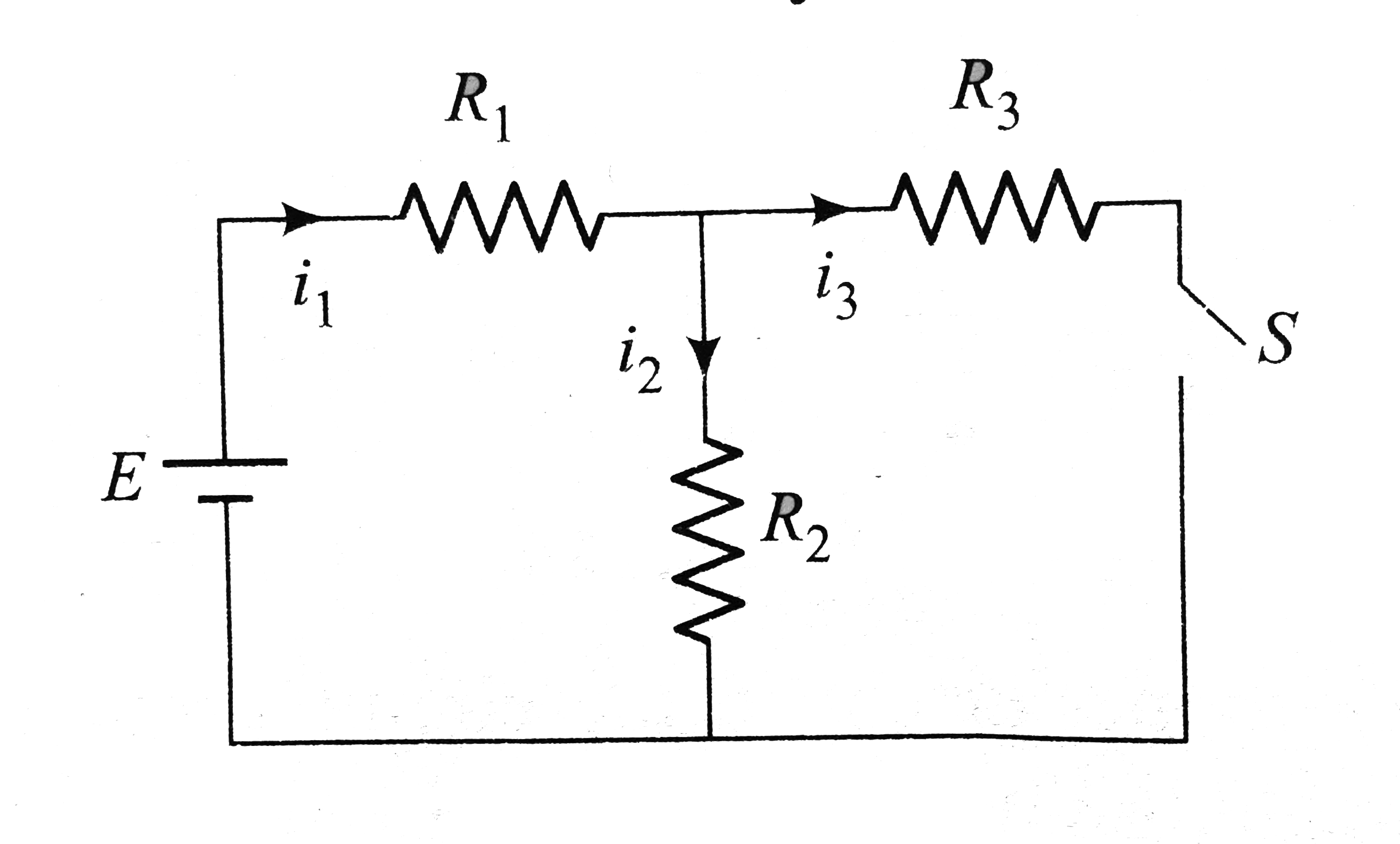
Immediately after tuning switch S on,View SolutionIn the circuit shows in Fig E=15V, R1=1Ω, R2=1Ω, R3=2Ω, and L=1.5H. The currents flowing through R1,R2,and R3 are i1,i2, and i3, respectively.
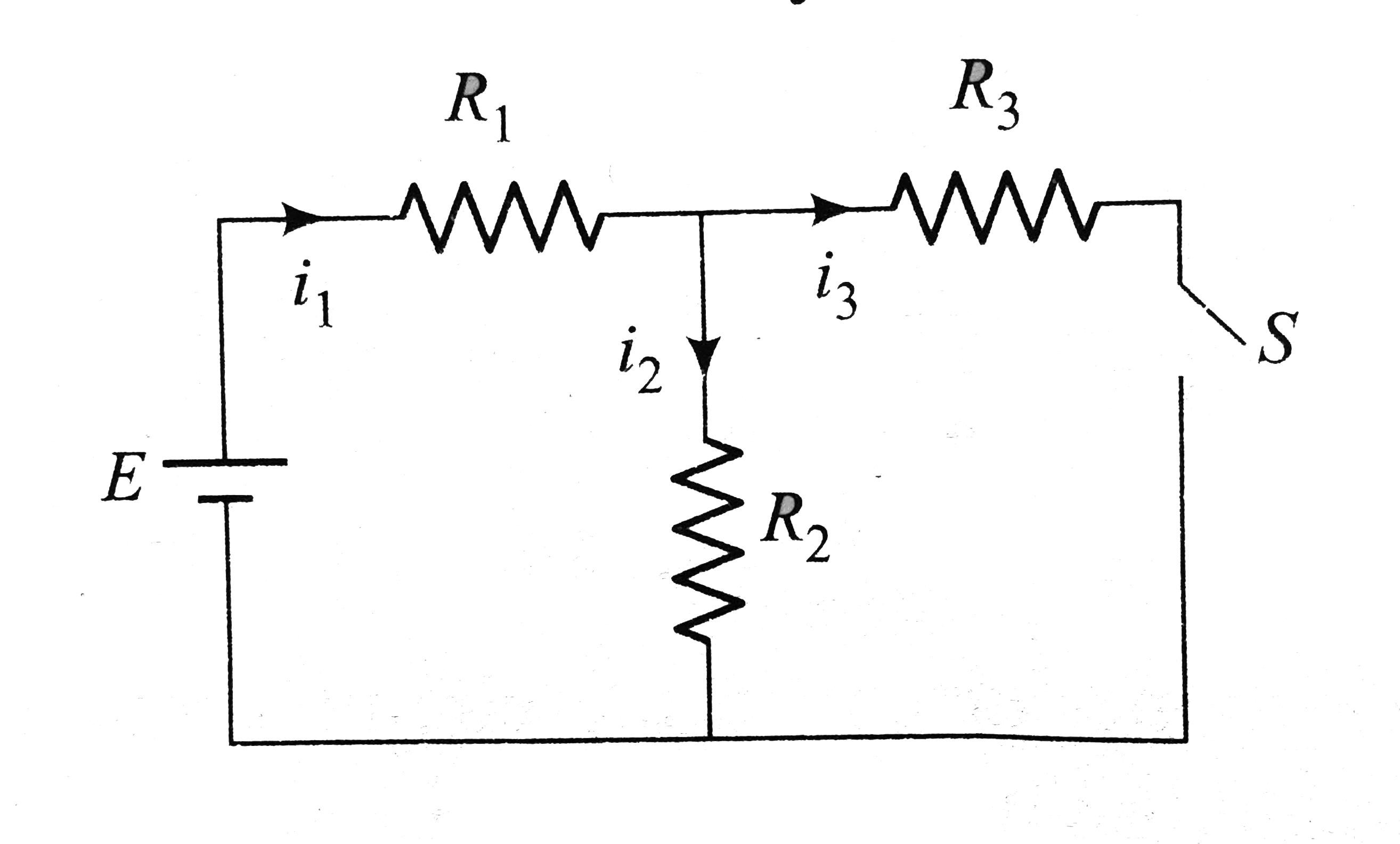
After the circuit reaches the steady state,02:58View SolutionIn the circuit shows in Fig E=15V, R1=1Ω, R2=1Ω, R3=2Ω, and L=1.5H. The currents flowing through R1,R2,and R3 are i1,i2, and i3, respectively.
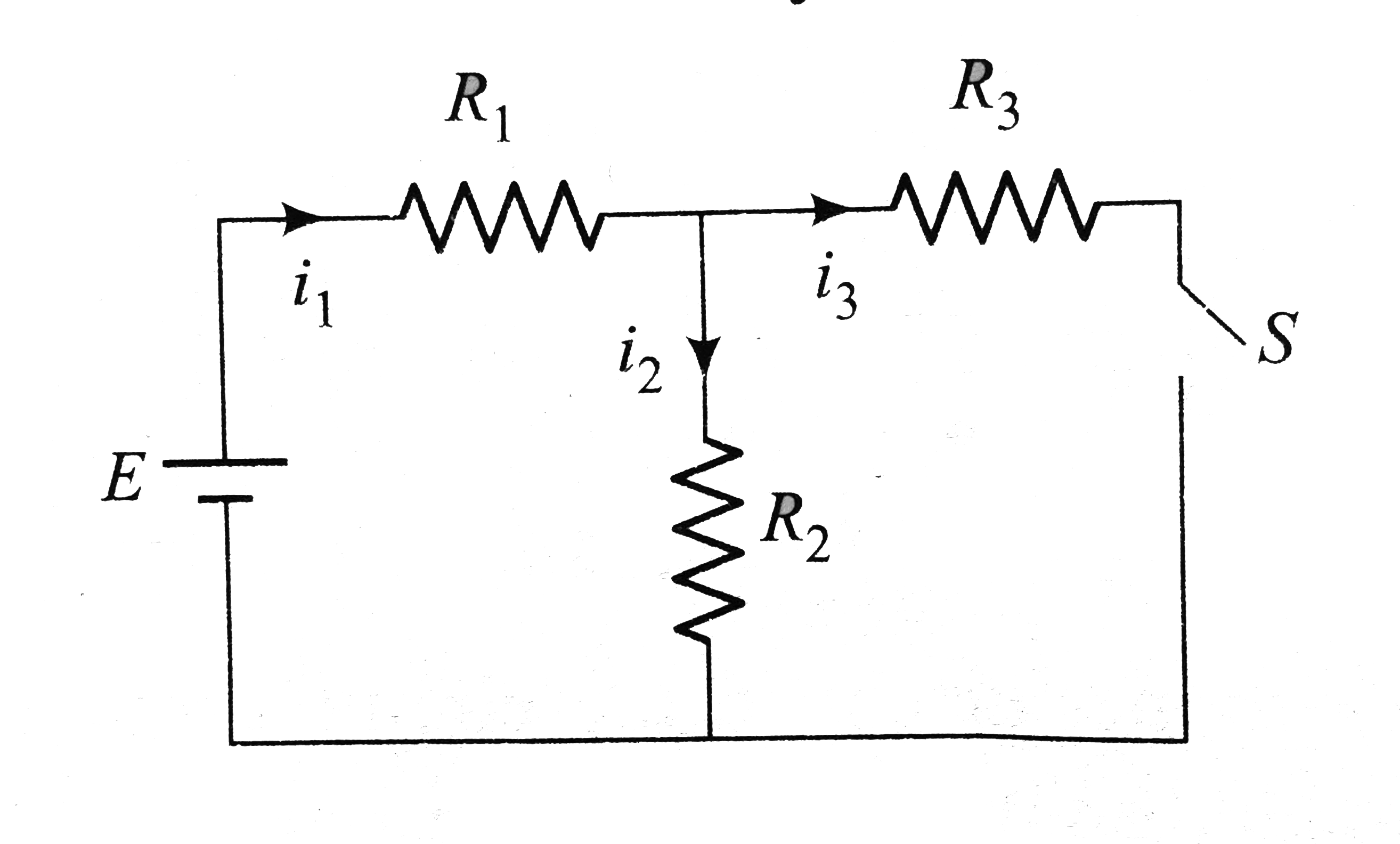
Immediately after connecting switch S,View SolutionIn the network shown the potential difference between A and B is (R = r_(1) = r_(2) = r_(3) = 1 Omega, E_(1) = 3V, E_(2) = 2V, E_(3) = 1V )
03:06View SolutionIn the circuit shown below E1=4.0V,R1=2Ω,E2=6.0V,R2=4Ω and R3=2Ω. The current I1 is
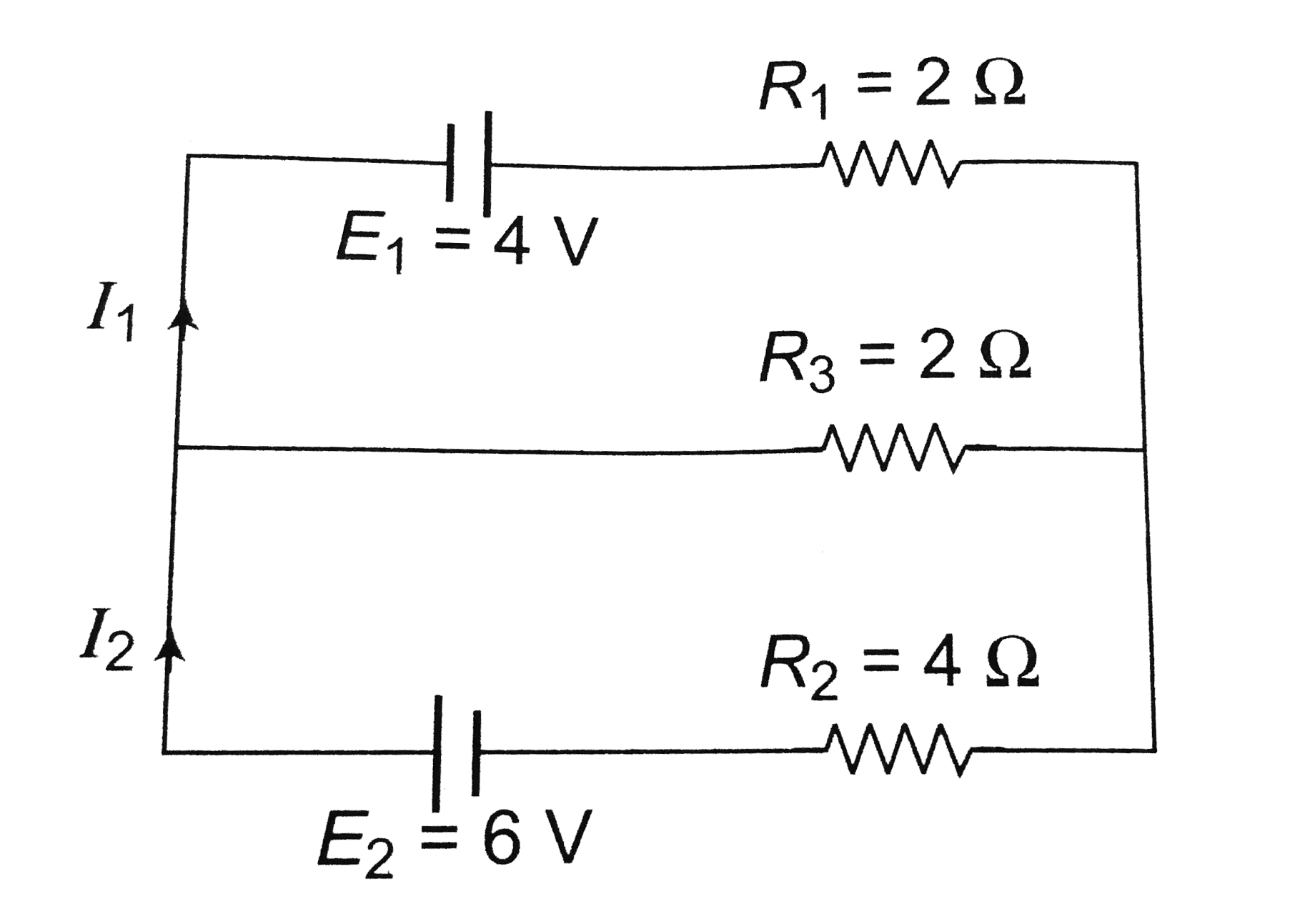 05:59View Solution
05:59View Solution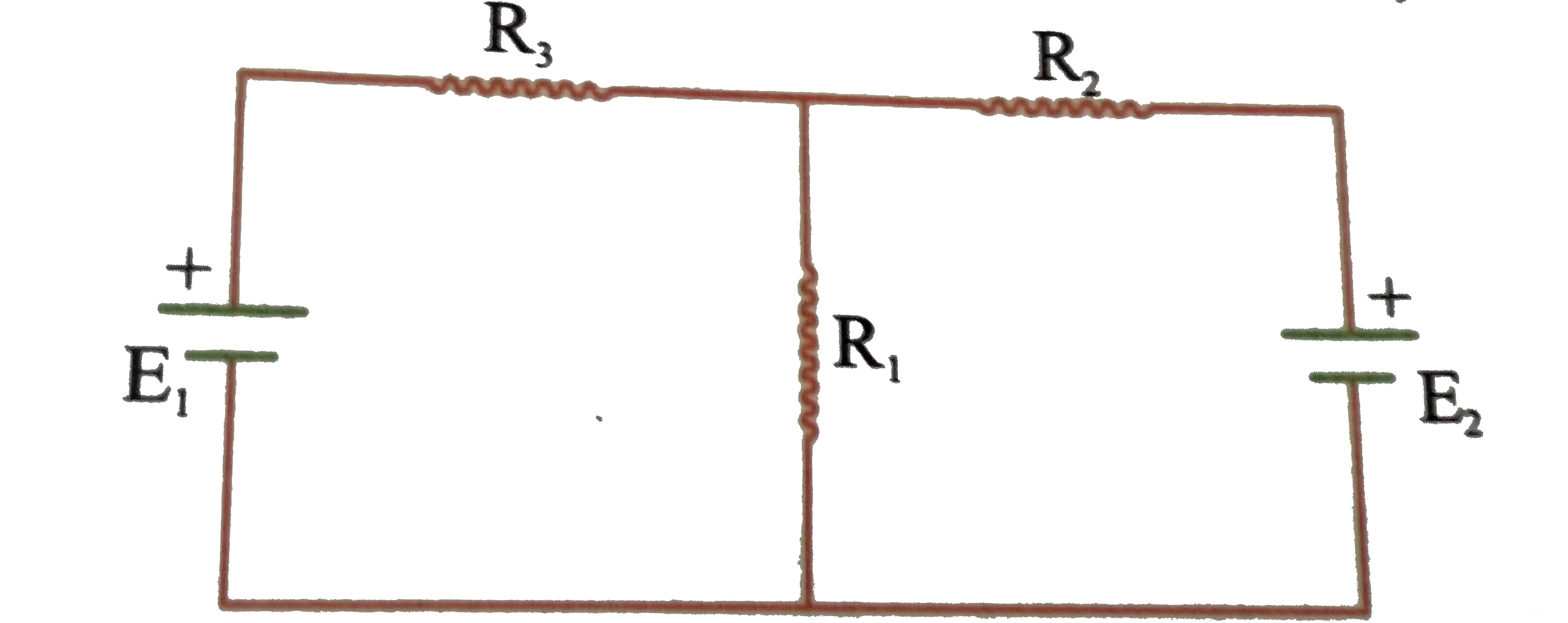
In the electrical network, shown in the diagram R1=5Ω,R2=2Ω,R3=3Ω and E1=2E2=10V, sources have negligible internal resistance. For this network,02:21View SolutionIf E_(1) , E_(2),E_(3) ... E_(n) represent emfs of a number of cells of internal resistances r_(1) , r_(2) , ... r_(n) then mention their equivalent emf and internal resistance when these are connected in series.
06:32View SolutionIn the given circuit. E_(1) = 6 volts, E_(2) = 2 volts, E_(3) = 6 volts R_(1) = 6OmegaR_( 2)=2Omega R_(3) = 4Oemga, R_(4) = 3Omega and C=5muF . Find the current in R_(3) and energy stored in the capacitor at steady state
02:33View SolutionIn the circuit shown, E_(1)= 7 V, E_(2) = 7 V, R_(1) = R_(2) = 1Omega and R_(3) = 3 Omega respectively. The current through the resistance R_(3)
05:28View SolutionIn the circuit shown below, E_(1)=17V,E_(2)=21V,R_(1)=2Omega,R_(2)=3Omega and R_(3)=5Omega . Using Kirchhoff.s laws, find the currents flowing through the resistors R_(1),R_(2) and R_(3) . (Internal resistance of each of the batteries is negligible.)
03:08View SolutionIn the circuit shows in Fig E=15V, R1=1Ω, R2=1Ω, R3=2Ω, and L=1.5H. The currents flowing through R1,R2,and R3 are i1,i2, and i3, respectively.

Immediately after tuning switch S on,View Solution

